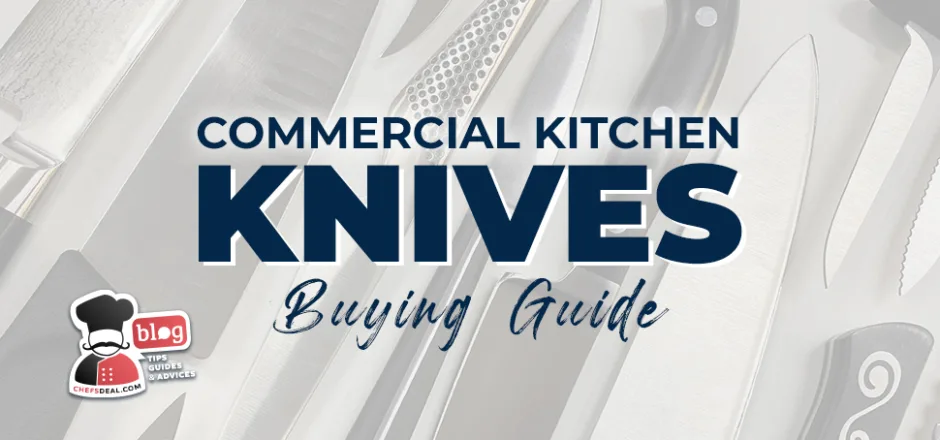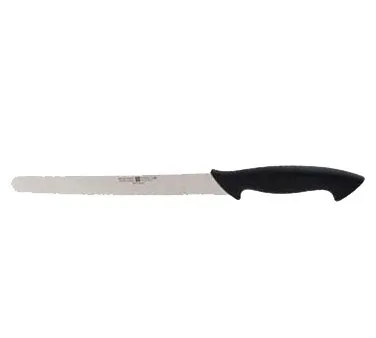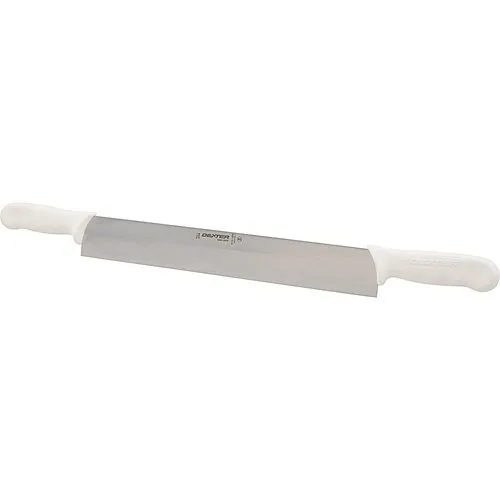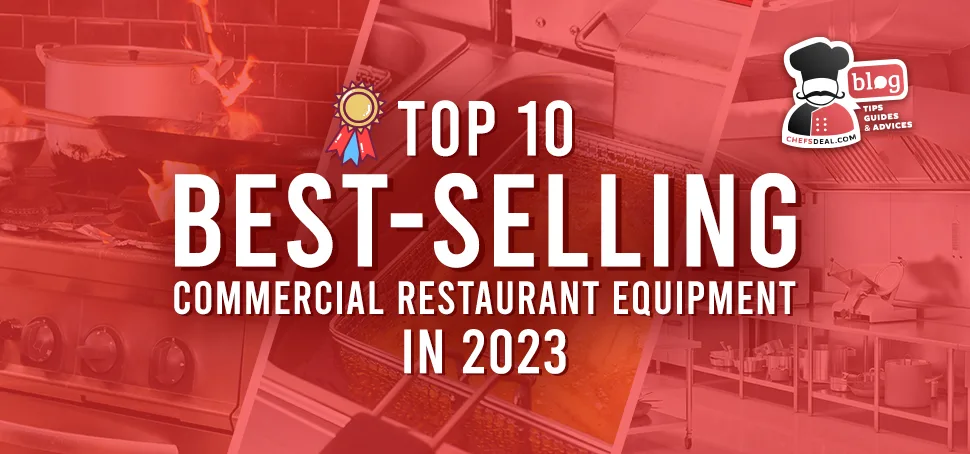Commercial kitchen knives are essential for any kitchen, handling many tasks, from chopping to slicing various items. Kitchen knives are the brushes of the chefs with which they perform their art, and using the right kitchen knife for the right task will affect the process’s ease and efficiency and the outcome’s quality. We prepared this commercial kitchen knife guide, including the different types of knives, usage areas, and materials to help you to choose the best one.
Parts of a Commercial Kitchen Knife
The simple it looks, the more important the details are. A commercial kitchen knife is made with deliberate engineering. Every type of knife has a specific design to meet different purposes. A kitchen knife basically has 2 parts: a blade and a handle. The blade of a knife consists of these 5 parts: The belly, spine, heel, tip, and surface.
Belly: The belly is the middle of the blade, used for cutting hard and soft food. The curved part is for mincing meat or veggies.
Tip: The tip is the front part of the blade, mostly used for cutting or chopping small items such as garlic or mushrooms.
Spine: The spine is the back of the blade, where it is not sharp. The spine part is generally used for breaking up tiny bones or shellfish.
Heel: Because of the optimum weight distribution, you can cut hard and solid food items with the heel part of your knife.
Surface: A chef’s knife has a wide and flat surface that can be used for flattening meat cuts or transporting little cuts and is also mostly used for mashing garlic cloves.
3 Main Considerations for Choosing The Right Commercial Kitchen Knife
There are 3 main aspects to consider before choosing a commercial kitchen knife, type, material, and maintenance. So it is decisive to know the types and what type works better for what task before choosing a commercial kitchen knife.
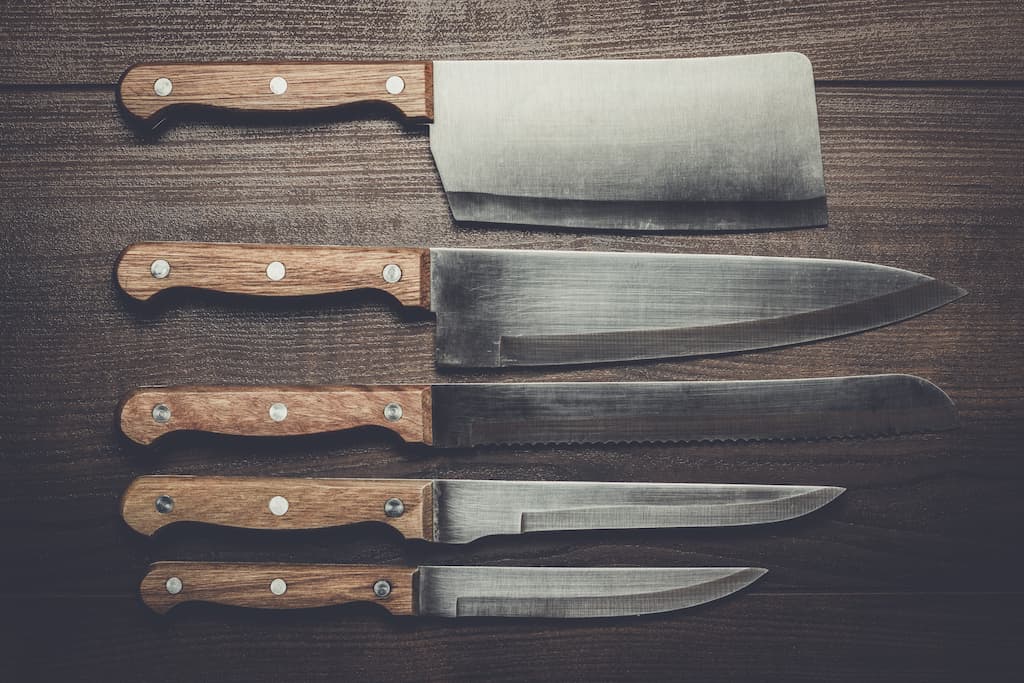
Commercial Kitchen Knives Types
It is one of the simplest tools, but we listed 11 types of commercial kitchen knives with specific usage areas:
1. Butcher Knife
Butcher knives are used to cut and trim large pieces of meat with straight blades they feature that are mostly 12 inches long. A cimeter, on the other hand, is another sort of butcher knife featuring a curved blade. Although most butcher knives have rounded points, breaking knives, designed to prepare huge quarters of meat, have sharp tips that provide delicate and rapid cuts, slicing, and mincing.
2. Boning Knife
Boning knives are used to separate meat from bones and trim fat and fillet fish. Boning knives’ blades are mostly 5-7 inches long. They feature either straight or curved, flexible or rigid blades. While curved blades allow chefs to carve accurately, straight blades provide rapid, simple cuts. And while flexible knives are favored for dressing poultry and fish, rigid blades are best for hard meat like beef and pork.
3. Bread Knife
A bread knife with a serrated edge will neatly cut slices through bread, no matter what kind of bread you are cutting. A bread knife features a 6-10 inches long blade, and some may feature an offset blade. An offset blade is a blade that is lower than the handle in an L shape, allowing for an easy cut without hitting your knuckles on the cutting board.
4. Carving Knife
Carving knives, mostly used with a carving fork for stability, are perfect for carving precise slices and cuts in poultry, roasts, and ham. Their blades are typically 8-12 inches long and thin, designed to cut through meat in a single stroke. The blades of a carving knife may have scalloped edges, designed to prevent the meat from sticking to the blade and ripping and provide intact pieces.
5. Cheese Knife
Cheese knives generally feature 8-11 inch long blades and can have one or two handles for better leverage while slicing dense cheese blocks. Other cheese-slicing tools, such as rolling slicers, allow you to control the slice thickness, and cheese knives with holes provide easier cutting.
6. Chef Knife
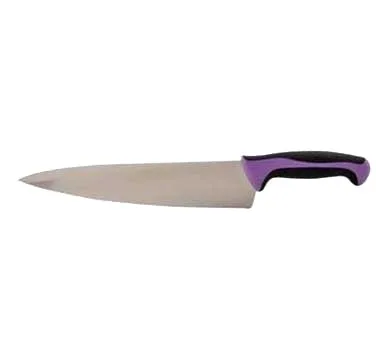
A chef knife, also known as a cook’s knife, is a multi-purpose knife designed to cut, chop, slice, and mince various food items ranging from chicken to vegetables. The blades of these multifunctional kitchen knives have a curved edge and vary in length from 5 to 12 inches, but the most common ones are 6 to 10 inches.
7. Fillet Knife
A fillet knife is a popular tool for cutting and cleaning fish, featuring thin, flexible blades ranging from 4 to 9 inches long. They are similar to boning knives but aren’t suitable for deboning hard pieces of meat.
8. Cleaver
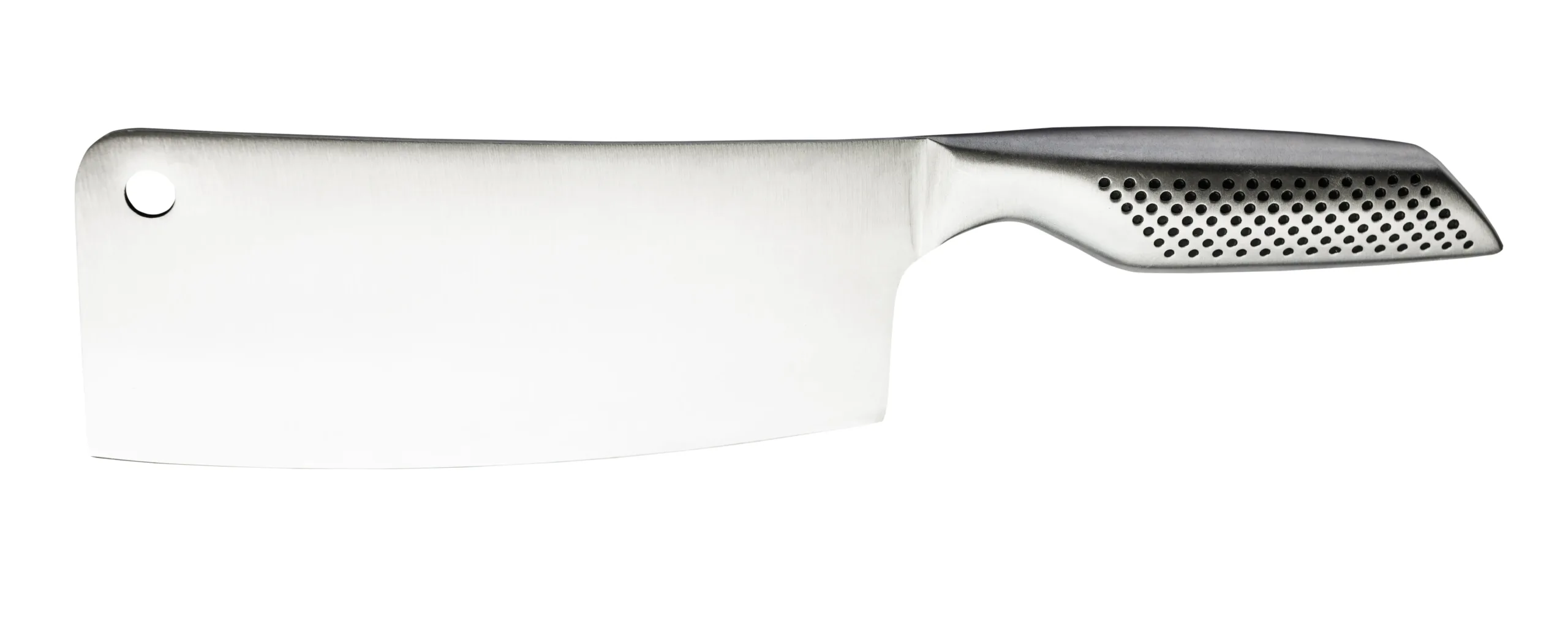
Cleavers are designed for heavy-duty butchering operations, such as separating the primary parts of meat and bones with their broad, square blades, which are normally 6 to 12 inches long and as wide as 4 inches. On the other hand, Chinese cleavers are smaller and lighter, meant to be multifunctional knives that can also be used for other chopping tasks.
9. Oyster Knife
Oyster knives are designed to shuck oysters with their dull blades. Investing in specialty knives for lobsters, scallops, and clams is a good idea if you have an extensive seafood menu.
10. Paring Knife
A paring knife can be seen as a tiny chef’s knife with its 2,5 to 4 inches long blade. These knives are great for detailed tasks requiring hand control, such as peeling, slicing, and trimming fruits and veggies.
11. Santoku Knife
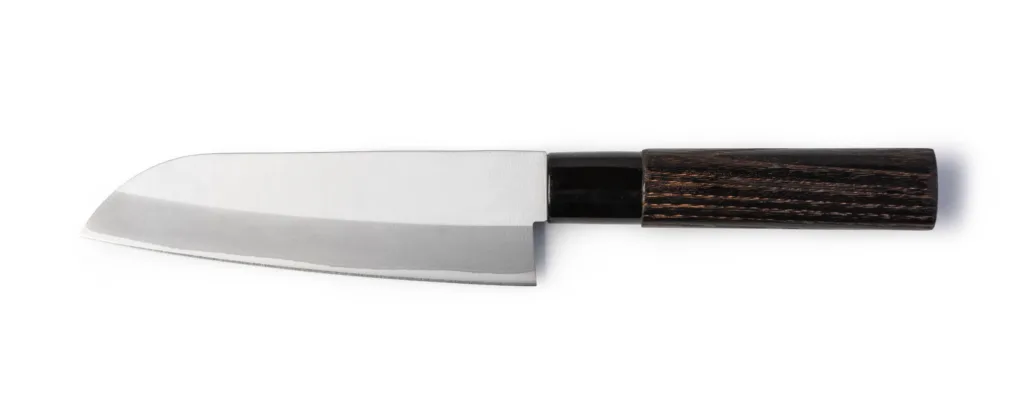
The Santoku knife has taken its name from Japan, meaning three virtues related to its 3 culinary duties: Slicing, dicing, and mincing. They have shorter and broader blades with blunter tips than a chef’s knife. The scallops prevent chopped items from sticking to the blade, and the shape of the blade is great for scooping chopped items up.
12. Specialty Knives
Specialty knives might be worth the expense since they make ordinary chores easier. Tourne, also known as the bird’s beak knife, is used for peeling fruits and veggies and making delicate cuts for decorations. There are other specialty knives, such as rabbit knives, boning hooks, and peeling knives.
13. Japanese Knife
Japanese are mastered in the art of cutting with their specialty commercial kitchen knives. There are various of them, each with specific tasks, and they are mostly made of hard steel and feature sharp angles. Deba is used for filleting fish and cutting meat, Nakiri and Usuba are vegetable knives, and Yanagiba is a sashimi knife.
14. German Knife
German knives are commercial kitchen knives popular because of their weight, making them a favorite of cooks who prefer heavier blades. German knives are typically made of softer steel and less angled than Japanese knives, so they are less sharp, making them more resilient and withstand extensive use.
Materials of Commercial Kitchen Knives
Commercial kitchen knives’ blades and handles can be made of various materials, each with different usage areas and pros and cons. Here is the list of each material with its specific features to help you determine which suits you.
Blade Material
- Carbon Steel: Carbon steel is made of iron and carbon but can also include trace amounts of other elements. Higher carbon steel knives mean more carbon-included steel is used in the knife, making the blades harder. One of the common advantages of a carbon steel blade is its ability to maintain a sharp edge for a long time, but it requires more maintenance than other types since it can rust and stain.
- Stainless Steel: Stainless steel is the most popular blade material preferred in commercial kitchen knives since its resistance to rust and minimal maintenance requirement. However, it can’t maintain its sharp edge as carbon steel does. Some companies provide high-carbon stainless steel blades featuring the benefits of both materials.
- Ceramic: Ceramic is another popular commercial kitchen knife material that is lightweight, doesn’t rust, and can maintain its edge. But it is not as durable as other materials and can be used to cut softer items.
Handle Material
- Wood: Wood handles can be made of hardwood, walnut, or rosewood, creating a classic look. But it can be a bad choice for commercial kitchens since it requires maintenance and harbor germs.
- Plastic: Handles constructed of synthetic polypropylene or fiberglass-reinforced nylon are lightweight, inexpensive, and chemical and moisture-resistant. They are popular in commercial kitchens because of their durability and little maintenance.
- Stainless Steel: Some commercial kitchen knives feature stainless steel handles, complementing the blade material. They are durable, resistant to corrosion, and provide a modern look.
- Micarta: Micarta is one of the most popular commercial kitchen knife handle materials consisting of the resin-soaked composite formed from layers of linen or paper. It is a common option for high-quality kitchen knives due to its great grip, durability, and moisture resistance.
- G10: It is made of high-pressure fiberglass laminate, popular in high-end kitchens due to its lightweight form and resistance to moisture and temperature changes. It is also highly durable and provides a fine grip.
Maintenance of Commercial Kitchen Knives
Maintenance will keep everything working flawlessly and like new. Especially for commercial kitchen knives, sharpening and honing are a must to avoid the reduction in production quality and ensure efficiency in the kitchen.
Sharpening removes tiny steel bits from the blade’s edge, leaving a sharpened edge. Since the sharpening steel removes metal from the blade, it shouldn’t be done on every use. Honing steel provides less harshness to the blade by removing only a bit from the steel of the blade.
On the other hand, Honing refers to straightening an already sharp knife’s edge that can be rolled in time. When the tip of the knife rolls and loses its form, it can no longer touch the cutting board, resulting in sloppy cuts. Many honing tools may be used daily if needed.

Conclusion
Commercial kitchen knives are designed to withstand the heavy use of a professional kitchen with the durable materials they are composed of. There are 3 main considerations while choosing the right commercial kitchen knives: types of use, material, and maintenance. They are also designed specifically with great balance, control, and sharpness for precision in cutting. They can perform different tasks while ensuring the safety and comfort of use. Investing in commercial kitchen knives will result in higher product quality, ease of process, and cost savings in the long run.

